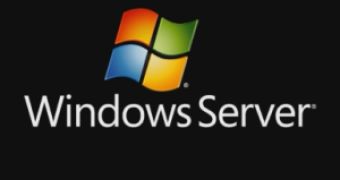With the simultaneous release to manufacturing of Windows Vista Service Pack 1 and Windows Server 2008 on February 4, 2008, Microsoft is sending out a clear message that its server and client platforms are joined at the hip. Further evidence of this is the fact that Windows Server 2008 is synchronized with Vista to the point where the RTM release of the server platform is labeled Service Pack 1, to match Vista SP1. But joined at the hip does not mean that the two products will share the same trajectory in terms of adoption. In fact, according to a recent survey put together by CDW Corporation, Windows Server 2008 uptake will shame Vista.
Even if at the end of 2007 Microsoft applauded an install base of in excess of 100 million users for Vista, penetration in the business environment is about 3%, and suffering. Windows Server 2008 will officially be launched on February 27, 2008, and will become available starting with March 1. But there is already a high degree of anticipation for the successor of Windows Server 2003. CDW explained that virtualization capabilities, as well as consistent interoperability support for mixed source environments, are what will make Windows Server 2008 a sure hit.
"This poll reflects the complexity of today's server environment, where preferences for operating systems are more heterogeneous than in the desktop market," revealed David Cottingham, director of product and partner management at CDW. "Many data centers operate more than one server operating system, and every organization needs to have a server strategy in place to capitalize on the benefits and new features in the server operating system."
The poll featuring 772 IT professionals indicated that 63% of respondents are preparing, together with their organizations to upgrade to Windows Server 2008. No less than 18% of participants stated that the upgrading process had already debuted, or that there were at least comprehensive plans finalized for the migration. An additional 20% said that Windows Server 2008 was not an unfamiliar product. But even though Microsoft is applauding Windows Vista and Windows Server 2008 under the slogan better together, 66% of respondents explained that there was no connection between upgrading to Windows Server 2008 and doing the same move for Vista. But the remaining 34% plan to upgrade to both Vista and Windows Server 2008, starting with the implementation of the client platform first.
Worries around the transition to Windows Server 2008 are similar to that of Windows Vista, focused mainly on RTM build bugs, ahead of SP1, and application and hardware compatibility issues. One major aspect of Windows Server 2008, and a driving factor for adoption, is virtualization. Windows Server 2008 comes to the table with a virtualization role and, in this context, it is tailored to the needs of businesses. 35% of the respondents in the CDW Windows Server 2008 Tracking Poll work in organizations that use server virtualization, with 27% evaluating virtualization solutions. No less than 35% of participants claim that the virtualization capabilities of Windows Server 2008 are an "attractive benefit."
"This is consistent with the increasing interest CDW sees from customers in our offerings of server virtualization solutions. There are a variety of options available, of course, and while built-in virtualization will not be in the initial Windows Server 2008 Release-to-Manufacture version when it launches on February 27, Microsoft is tapping into this market interest with their plan to integrate virtualization features into the server operating system later this year," Cottingham added.

 14 DAY TRIAL //
14 DAY TRIAL //